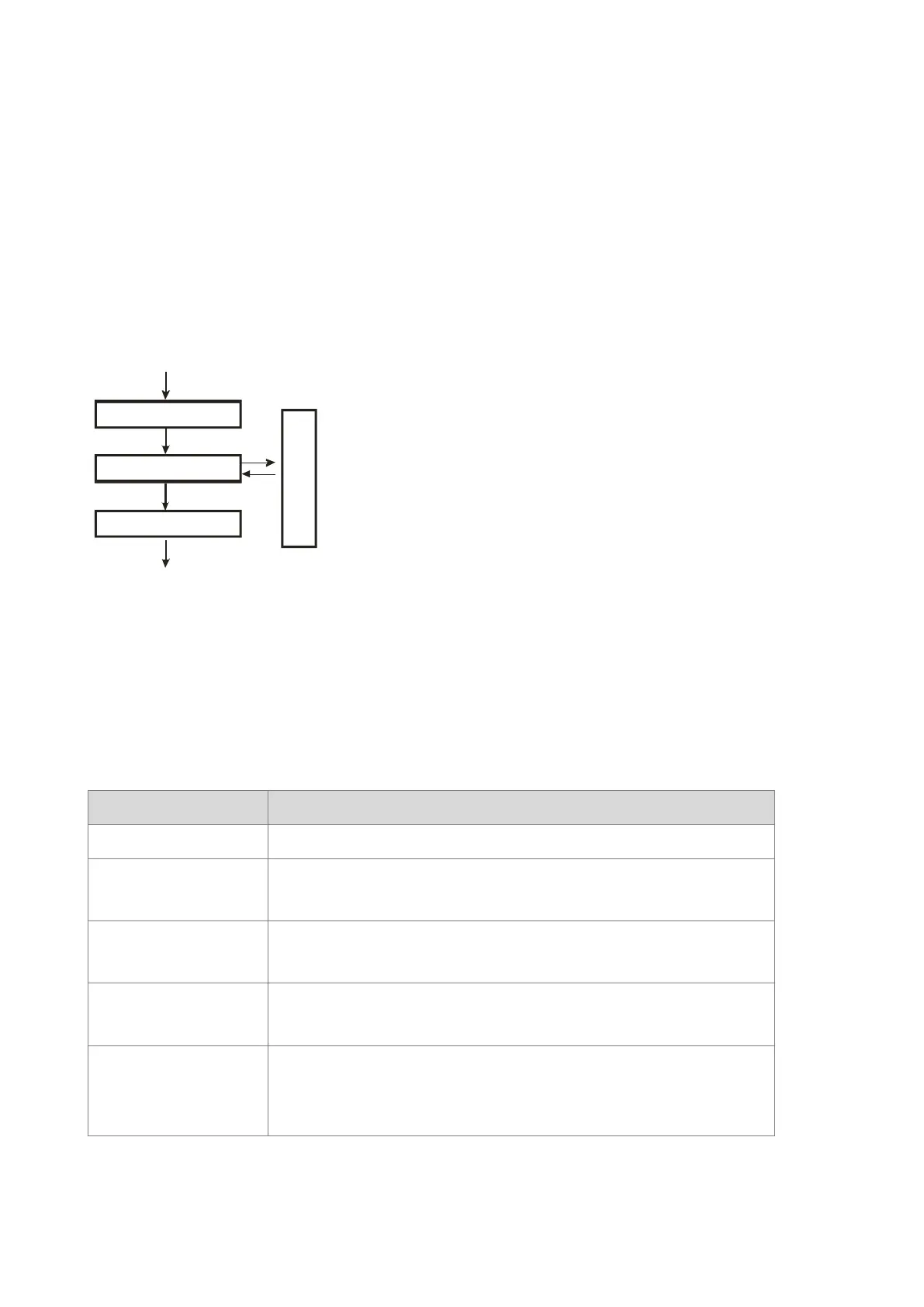5.2. Device Functions
Procedure for processing the program in the PLC:
Input terminal X
Device memory
Processing the program
Device memory
Regenerating the output signal
and sending it to the output terminal
Regenerating the input signal
Device memory
Regenerating the input signal
1. Before executing the program, the external input
signal state is read into the memory for the input
signal.
2. When the program is executed, the state in the
memory location for the input signal does not change
even if the input signal changes from ON to OFF or
from OFF to ON. The input signal is not refreshed
until the next scan begins.
Processing the program
After the input signal is refreshed, the instructions in the
program are executed in order from the starting address
of the program. The results are stored in the device
memories.
Regenerating the state of the output
After the instruction END is executed, the device memory
state in the device memory is sent to the specified output
terminal.
5.2.1 Values and Constants
Name Description
Bit A bit is the basic unit in the binary system. Its state is either 1 or 0.
Nibble
A nibble is composed of four consecutive bits (for example b3–b0). Nibbles
can represent 0–9 in the decimal system or 0–F in the hexadecimal system.
Byte
A byte is composed of two consecutive nibbles (i.e. 8 bits, b7–b0). Bytes can
represent 00–FF in the hexadecimal system.
Word
A word is composed of two consecutive bytes (i.e. 16 bits, b15–b0). Words
can represent 0000–FFFF in the hexadecimal system.
Double word
A double word is composed of two consecutive words (i.e. 32 bits, b31–b0).
Double words can represent 00000000–FFFFFFFF in the hexadecimal
system.
Send Quote Requests to info@automatedpt.com
Call +1(800)985-6929 To Order or Order Online At Deltaacdrives.com
Send Quote Requests to info@automatedpt.com
Call +1(800)985-6929 To Order or Order Online At Deltaacdrives.com
